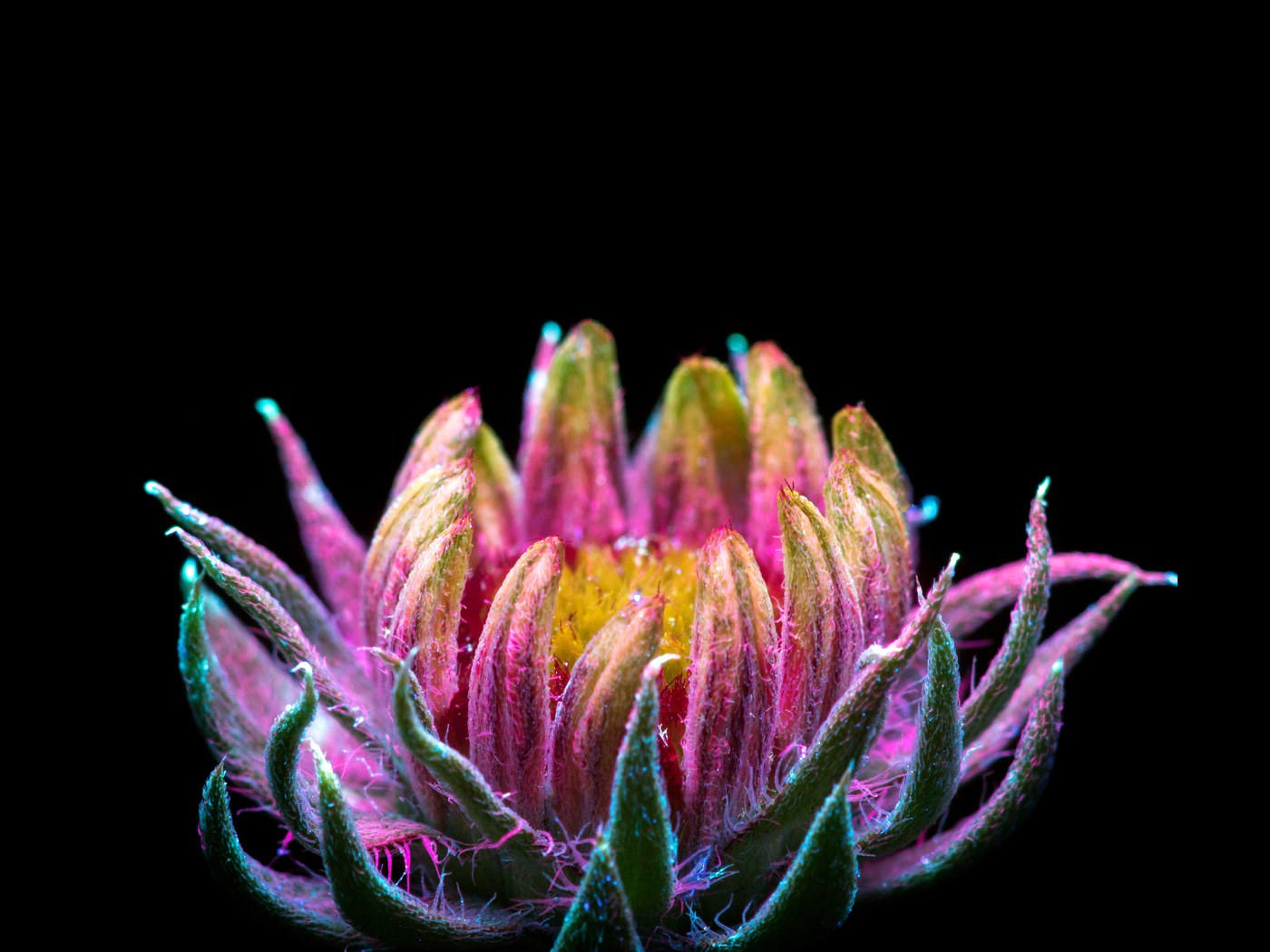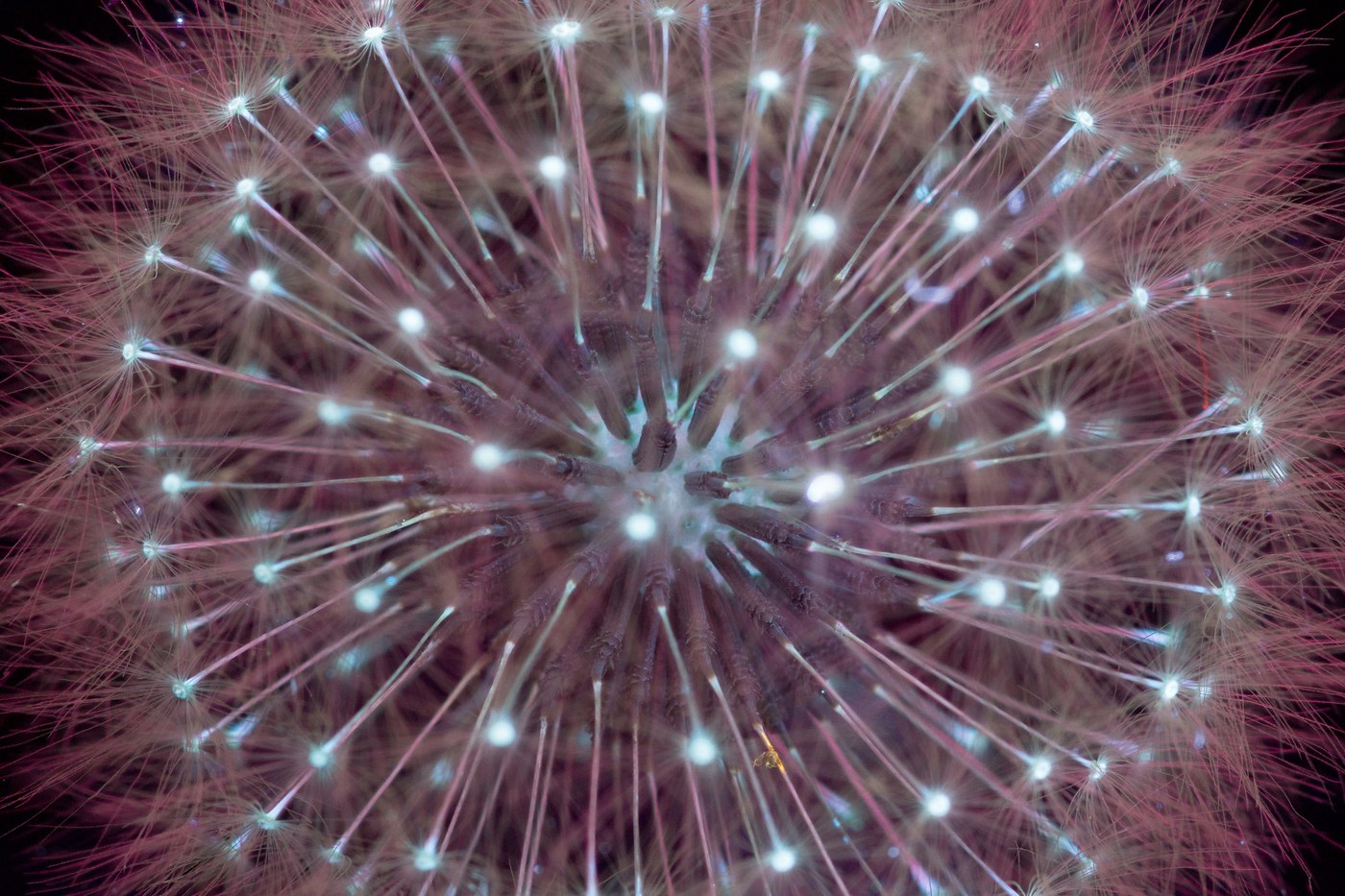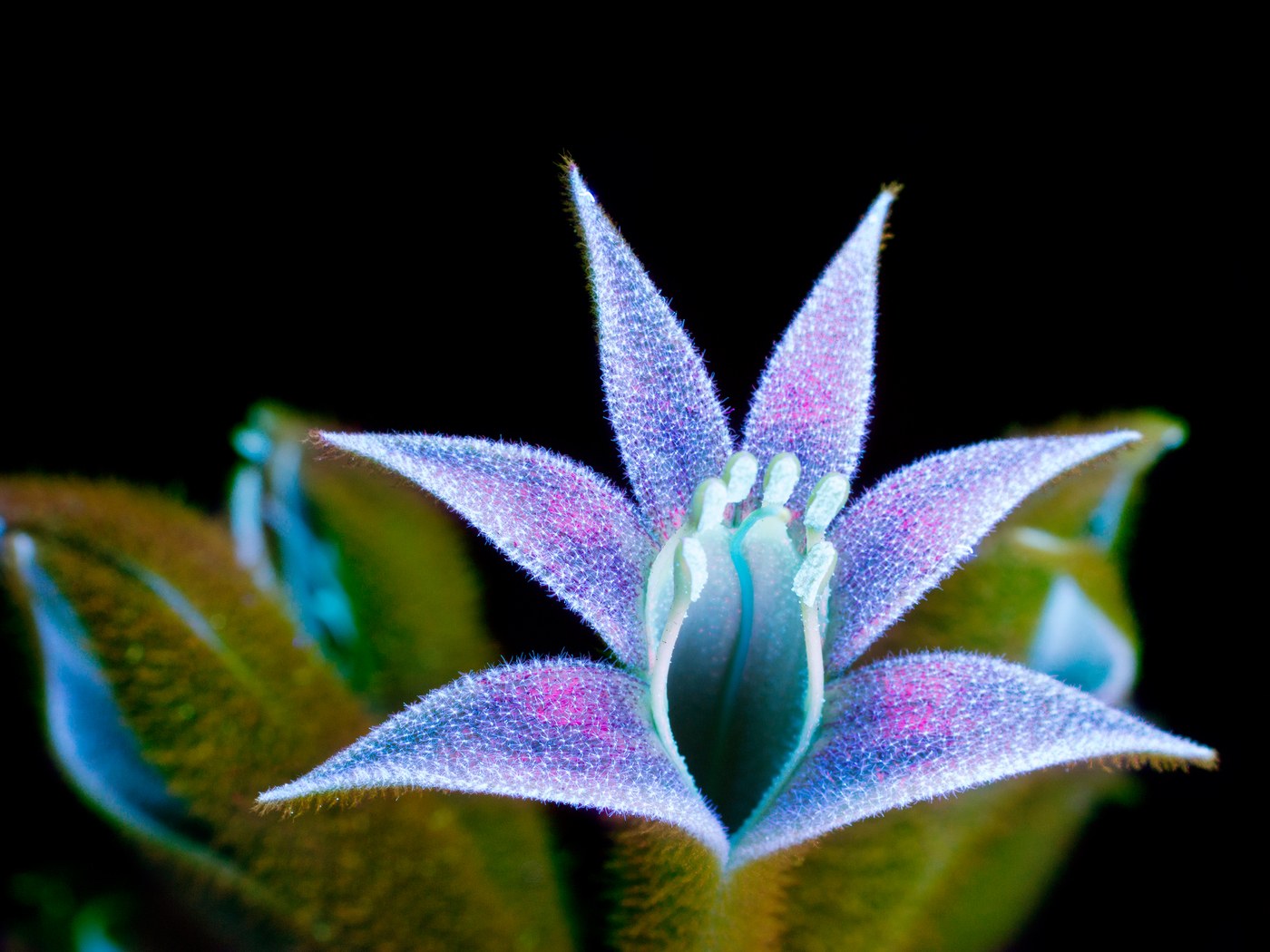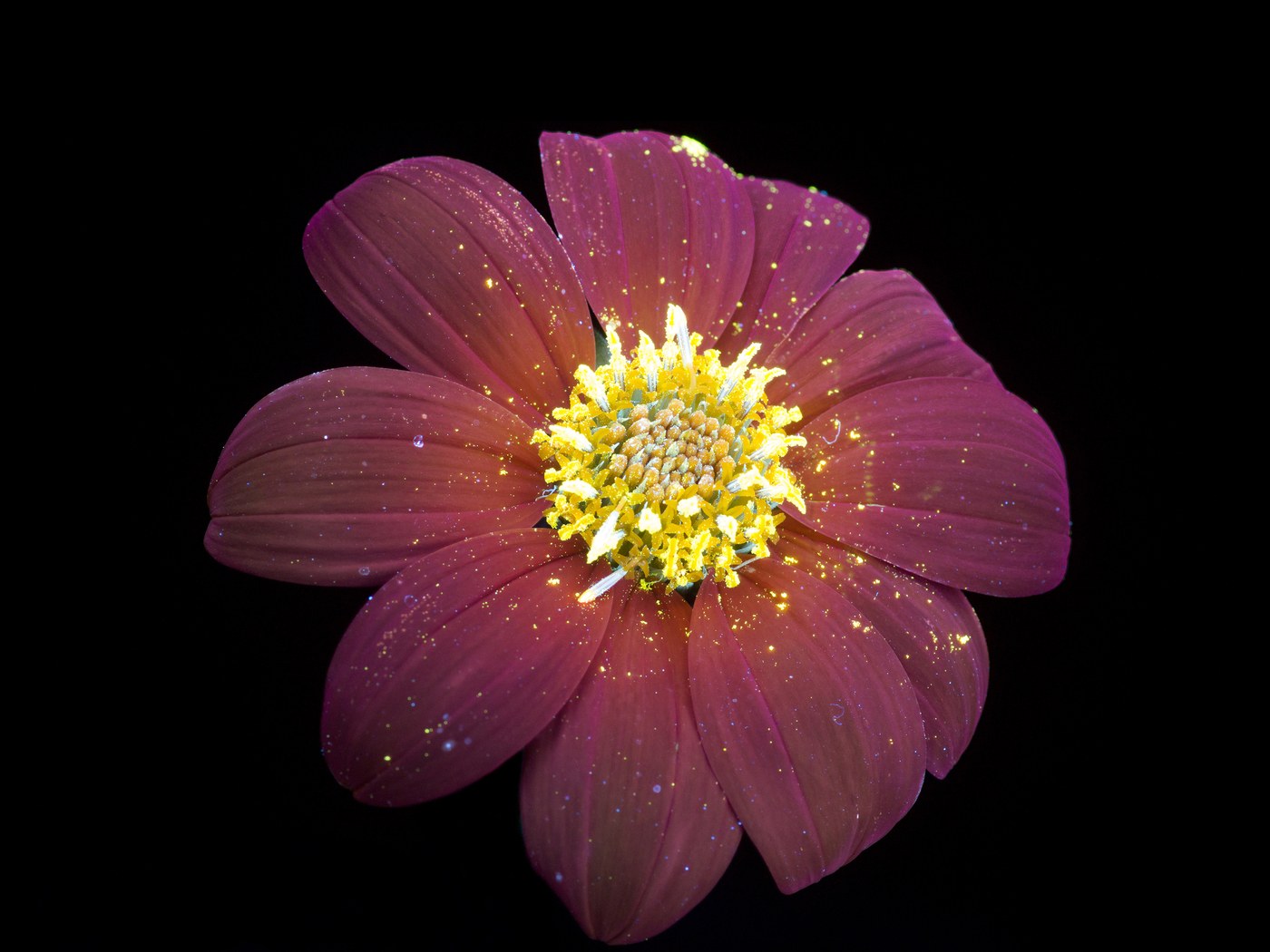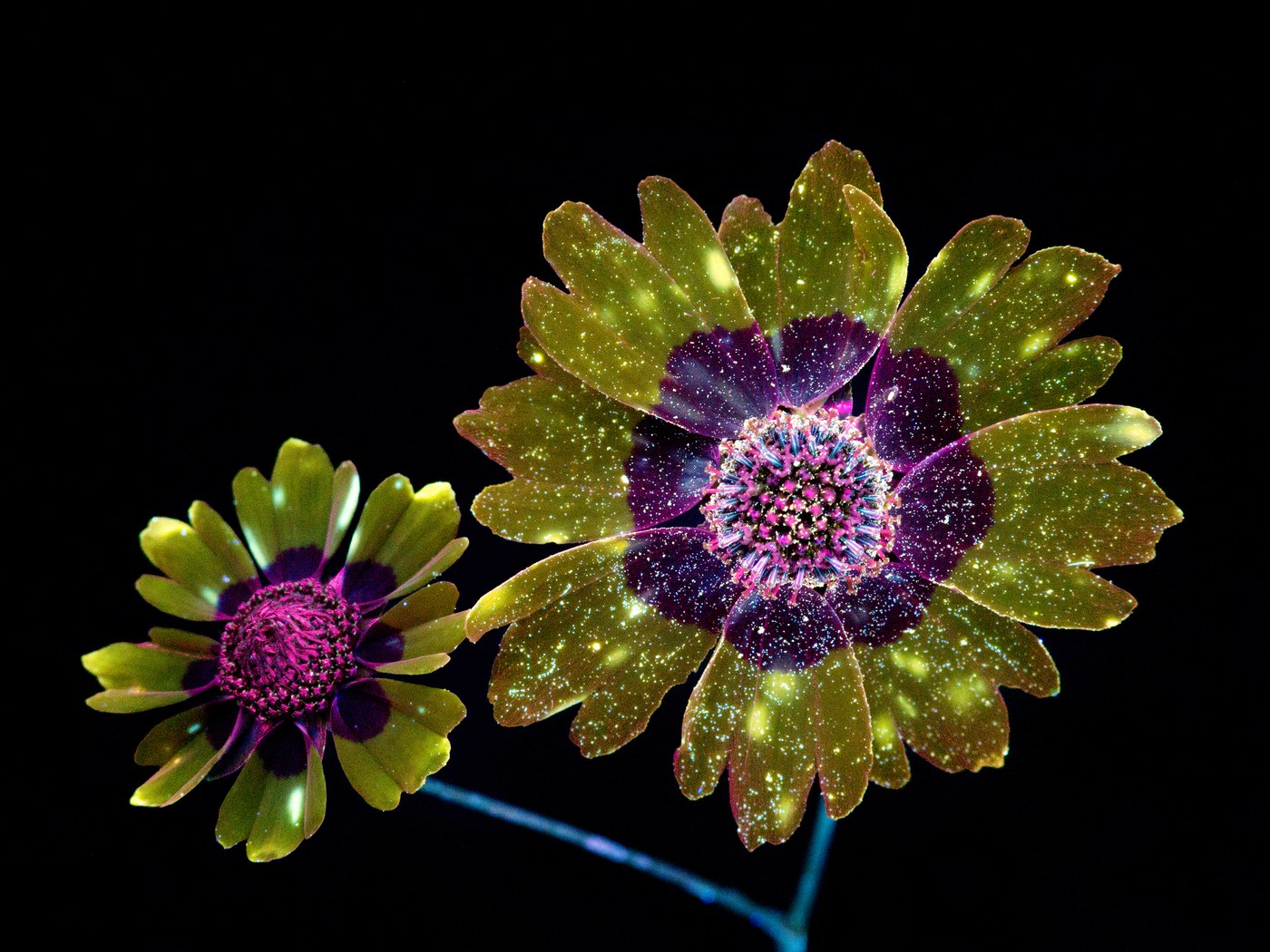The plants in Craig Burrows’ photographs are covered in wild hues of violet, pink, and green, making them appear to have been stolen from an extraterrestrial world. But the flowers and colors are genuine.

It is the outcome of an incredible natural trick. All plants reflect light. Flowers reflect any color, while leaves reflect red, yellow, or green. But plants can also fluoresce, which is the process by which they release longer visible-wavelength emissions after absorbing ultraviolet light. The same phenomenon occurs when a poster is illuminated by black light. According to Burrows, “The blossom literally sparkles.”
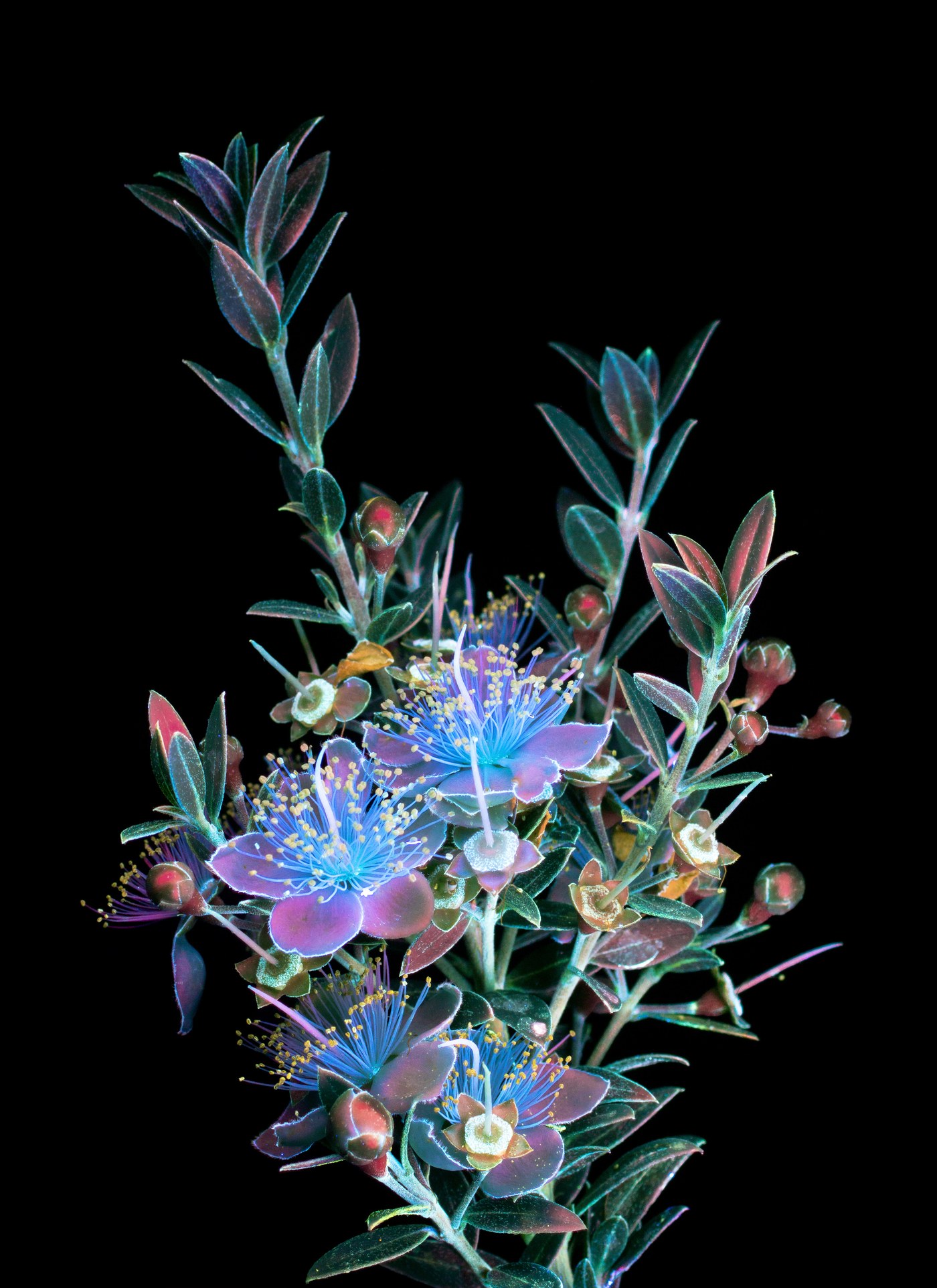
Burrows learned about ultraviolet-induced visible fluorescence photography three years ago while researching how to capture that glow. He read a tutorial and got to work immediately since he was intrigued. Around fifty plants, including Mexican sunflowers, calla lilies, and silk floss tree blooms, have been shot by him since then.

Burrows collects his samples while taking evening walks in his Arcadia, California, neighborhood. He brings his flowers inside, puts on some somber music to help him think creatively, and covers his desk with a black cloth. He positions every bloom in a copper pedestal that is covered in black tape before mounting his Sony A77 on a tripod and positioning it a short distance away. Lights out follows that. Burrows prefers lengthy exposures, illuminating the blossom with an LED protected by an ultraviolet-only UG11 filter while carefully panning the light over it to provide even illumination. He often loses track of time since he finds the process so captivating. When he finally decides to stop, he says, “I generally tell myself it will only be an hour, but it’s usually been three or four.”

Next, after spending numerous hours with Photoshop, dust is removed and white balance, contrast, noise, and sharpness are adjusted. Although painstaking, it pays off greatly. With every leaf, petal, and stalk flowering in strange hues, the plants appear to be glowing.
